Tag: leasing

Without data, anticipating buyer behavior in the months ahead can be challenging. While some OEMs had record sales¹ this spring, it remains critical to identify who’s in the market—whether to purchase or service their vehicle. With tax refund season in the rearview mirror and summer promotions approaching, consumers may be weighing their next move. Some could have “one foot in the showroom door” while others are waiting to see which dealer delivers the most compelling offer. Meanwhile, 41% of drivers choosing to keep their vehicles longer² are likely focused on maintaining them. So how can you best position yourself? Explore These 3 Strategic Moves to Navigate This Summer: Firm up your Service Marketing Plan: With summer road trips on the horizon, your customers may be in the market for services like A/C repair, wheel alignment, tire rotation, engine cooling, oil changes, multi-point inspections, and more. Discover who’s most likely to need service in the next 30–60 days with Experian Automotive’s AutoAudiences. Understand Customers’ Communication Preference: To effectively target your audience, start by understanding how they would prefer to communicate. As Car Dealership Guy puts it, “The shift in consumer preferences is undeniable and generational.”³ Experian Automotive’s Product Management Director, Kirsten Von Busch echoes this, adding, “Understanding generational differences is crucial to developing effective marketing strategies that resonate with each group’s unique preferences”. Experian’s Automotive Consumer Insights support this approach with data-driven messaging and communication channel recommendations. Focus on Growing Market Share with Mid-Year Auto Trends: Two purchase types that are trending in the beginning half of the year include Leasing⁴ and Trade-In. Whether you have EVs or AWD vehicles on your lot, consider (A)ll (W)eather (D)eals that can (1) Supersede those in your backyard as part of your Conquest strategy and (2) Build upon your “Why Buy” dealer loyalty. Experian Marketing Engine powers automotive marketing by helping automotive marketers identify the right audience, uncover the most appropriate communication channels, develop messages that resonate and measure the effectiveness of their marketing activities. Timing is everything, so start Targeting and Conquesting in your Market today! Sources: http://www.autonews.com/retail/sales/an-april-us-sales-2025-0501/ https://news.dealershipguy.com/p/3-real-time-shifts-in-car-buying-behavior-post-tariff-announcements-2025-05-01 https://news.dealershipguy.com/p/dealers-are-saving-thousands-in-labor-in-fixed-ops-2025-05-30 https://www.experian.com/blogs/insights/auto-the-current-state-of-ev-financing-why-more-consumers-are-choosing-leasing/

Amid interest rates leveling out and some lenders reassessing go-to-market strategies, the automotive finance landscape is experiencing notable shifts in market share. According to Experian’s State of the Automotive Finance Market Report: Q1 2025, banks recouped some of their total finance market share for the first time in several years, reaching 26.6% during the quarter, up from 24.8% a year ago. On the other hand, captives’ total market share declined from 31.3% to 29.8% year-over-year and credit unions experienced a modest increase from 20.2% to 20.6%. Despite the overall market share shifts, captives continue to lead in new vehicle financing at 57.1% in Q1 2025, although down from 62.1% the year prior. Meanwhile, banks increased to 24.1% this quarter, from 20.4% in Q1 2024 and credit unions went from 9.6% to 10.9% during the same period. On the used side, banks and credit unions were grouped much closer together. Banks led the way with 28.4% of the used finance market in Q1 2025, up from 27.9% last year, while credit unions went from 27.7% to 28.2% year-over-year and captives declined from 8.5% to 7.4%. As market share movement continues to be a valuable indicator of shifting strategies and consumer behavior, it’s important for automotive professionals to keep a close eye on these shifts to uncover new opportunities while looking for ways to stay ahead of the rapidly evolving industry. Breaking down the latest finance trends Data in the first quarter of 2025 shows the automotive finance market continues to stabilize as automotive professionals gain clearer visibility into lender behavior and consumer demand. For example, the average loan amount for a new vehicle increased $1,110 year-over-year to $41,720 in Q1 2025. However, the average interest rate dropped from 6.9% to 6.7%, and the average monthly payment went from $737 last year to $745 this quarter. For used vehicles, the average loan amount saw a slight uptick of $90 year-over-year, reaching $26,144 this quarter. Meanwhile, the average interest rate declined from 12.4% last year to 11.9% this quarter and the average monthly payment trended lower at $521, from $524 in Q1 2024. Monitoring and leveraging market share shifts and financing trends can support strategic planning while empowering automotive professionals to anticipate consumer purchasing patterns and tailor conversations more effectively to meet buyers where they are during their car buying journey. To learn more about automotive finance trends, view the full State of the Automotive Finance Market: Q1 2025 presentation on demand.
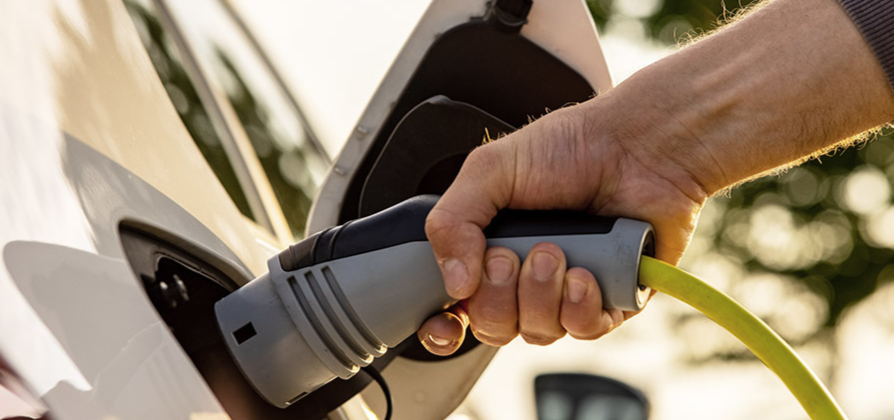
Quick Summary: Leasing continues to increase in the electric vehicle (EV) market. EVs accounted for nearly 20% of all new vehicle leases in Q4 2024, up from only 2.11% of new vehicle leases four years ago in Q4 2020. With consumers looking for flexibility—both in monthly payment and model availability—we’re seeing leasing continue to surge in the electric vehicle (EV) market. According to Experian’s State of the Automotive Finance Market Report: Q4 2024, EVs accounted for 19.5% of all new vehicle leases this quarter, up from 11.7% last year and a substantial increase from 2.1% in Q4 2020. Diving a bit deeper, data found EVs accounted for 9.3% of all new purchases in Q4 2024. Of those EVs, 50.1% were leased, while 38.9% were financed through loans. With lease payments for EVs ultimately being more affordable compared to loans and the excitement of driving the latest models packed with advanced technology, it’s no surprise we’re seeing leasing grow in popularity. Top leased EVs: How do lease and loan payments compare? As more consumers transition to EVs and manufacturers introduce new options to their lineup, certain models have become top choices for those opting to lease. Tesla accounted for the top two leased EVs in Q4 2024, with Tesla Model 3 coming in at 12.2% and Tesla Model Y at 9.1%. However, the Honda Prologue followed closely at 8.8% this quarter. Rounding out the top five were Hyundai IONIQ 5 (6.9%) and Chevrolet Equinox EV (5.9%). It’s notable that leasing has traditionally been a value-driven option for consumers, and the same holds true in the EV market. Leasing continues to offer lower monthly payments, making the finance option stand out for those looking to test an EV before purchasing or simply wanting the latest model on the lot. In Q4 2024, the average payment difference between a loan and a lease was $175. Though, the average monthly payment to lease a non-luxury EV was $504 this quarter, noting a $205 difference compared to the $709 loan payment. By comparison, the average monthly payment between a loan and leased luxury EV was $98—coming in at $842 for a lease and $940 for a loan. As more consumers choose to lease EVs, automotive professionals in both new and used markets have a chance to capitalize on this trend. By leveraging this data, those in the new retail market can effectively reach the right audience, while those in the used market can stay ahead of the curve and prepare for the influx of off-lease models in the coming years. To learn more about automotive finance trends, view the full State of the Automotive Finance Market: Q4 2024 presentation on demand.
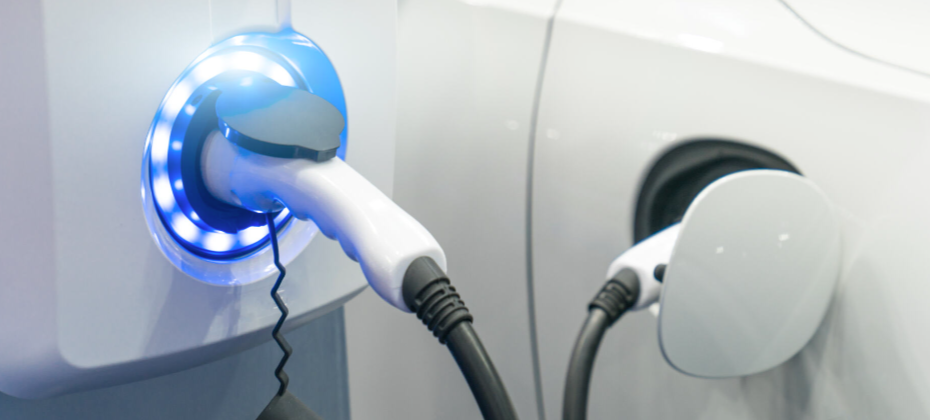
Electric vehicle (EV) registrations are re-gaining momentum as a wave of more affordable models hit the market, pushing more consumers than ever to make the transition. According to Experian’s State of the Automotive Finance Market Report: Q3 2024, EVs made up 10.1% of new vehicle financing this quarter, increasing more than 30% from last year. Furthermore, 45% of EV consumers leased their vehicle in Q3 2024—resulting in EVs accounting for 17.3% of all new vehicle leasing. Of the top five transacted EV models this quarter, Tesla accounted for three—with the Tesla Model Y leading at 31.8%, followed by the Tesla Model 3 (14.3%) and Tesla Cybertruck (4.9%). Rounding out the top five were the Ford Mustang Mach-E (3.9%) and Hyundai IONIQ 5 (3.7%). Interestingly, data in the third quarter of 2024 found that consumers’ financing decisions vary based on the EV model they’re looking at. For example, 76.5% of consumers purchased the Tesla Model Y with a loan and 13.1% opted for a lease; on the other hand, only 8.5% of consumers bought the Hyundai IONIQ 5 with a loan and 78.7% chose to lease. Despite the rising interest in leasing as more incentives and rebate programs roll out, some consumers still prefer to purchase their EV with a loan. Understanding financing patterns based on different models is key for professionals as they cater to the diverse preferences and determine the long-term viability of certain EVs and their potential for leasing renewals. Snapshot of the overall vehicle finance market As the finance market continues to stabilize, it’s notable that the average interest rate for a new vehicle fell year-over-year, going from 7.1% to 6.6%, respectively. However, average new vehicle loan amounts increased $736 from last year, reaching $41,068 in Q3 2024, and average monthly payments went from $732 to $737 in the same time frame. On the used side, average interest rates saw a slight uptick to 11.7% in Q3 2024, from 11.6% last year. Meanwhile, the average loan amount dropped from $1,195 over the last year to $26,091 this quarter and the average monthly payment declined from $538 to $520 year-over-year. With the overall market shifting and EVs re-sparking interest, automotive professionals should leverage how consumers are purchasing their vehicles based on average payments and the fuel type as more incentives are being offered. Monitoring these insights can unlock opportunities for tailored financing solutions that meet the needs of consumers as preferences continue to evolve. To learn more about automotive finance trends, view the full State of the Automotive Finance Market: Q3 2024 presentation on demand.

Driven by a range of appealing factors including lower monthly payments and a wider array of models—due to the continuous rise in new vehicle inventory—leasing has reappeared as an optimal choice for consumers who are in the market for a vehicle. According to Experian’s State of the Automotive Finance Market Report: Q2 2024, leasing increased to 25.35%, up from 21.14% in Q2 2023 and 19.30% the year prior. While the average monthly payment and interest rate for a new loan modestly increased year-over-year, leasing is increasingly becoming a more attractive option for those leaning towards flexibility and affordability. For example, the average monthly payment on a leased vehicle was $148 less than a loan this quarter. What’s more, it seems consumers are leaning towards larger vehicles. For instance, the Honda CR-V (2.98%) continued to lead the top leased models in Q2 2024, and it was followed closely by the Tesla Model Y (2.61%). Rounding out the top five were the Honda Civic (2.29%), Ford F-150 (2.02%), and Chevrolet Silverado 1500 (1.86%). Prime financing grows and lease payments decline across all segments When looking at risk distribution trends in Q2 2024, prime consumers accounted for nearly 70% of the total finance market—with prime coming in at 37.82%, down from 39.84% last year and super prime increasing from 28.98% to 31.59% year-over-year. Subprime also saw a slight increase, going from 13% to 13.06% during the same period. It’s notable that all risk segments experienced a decrease in average monthly payments for leased vehicles, as super prime went from $601 in Q2 2023 to $586 in Q2 2024, prime declined to $583 this quarter, from $596 last year, and subprime was at $597, from $611. With the average monthly payments declining year-over-year for majority of shoppers, it can potentially create a more competitive market and drive more consumers towards this finance option—something automotive professionals should keep a close eye on. New and used vehicle finance market overview Data in Q2 2024 found that new vehicle loan amounts increased slightly, reaching $40,927, up from $40,743 last year, and the average interest rate went from 6.78% to 6.84% year-over-year. Despite the increases, the average monthly payment for a new vehicle only experienced a $1 growth to $734 this quarter. On the used side, the average loan amount declined from $27,316 Q2 2023 to $26,248 in Q2 2024, and the average rate grew from 11.47% to 12.01% in the same time frame. Though, the average monthly payment declined to $525 this quarter, from $536 last year. As the automotive industry continues to adapt to the changing market conditions and consumer preferences, it’s important for professionals to leverage the most current data—this will allow them to effectively assist consumers by meeting their financial needs with the available options. To learn more about automotive finance trends, view the full State of the Automotive Finance Market: Q2 2024 presentation on demand.
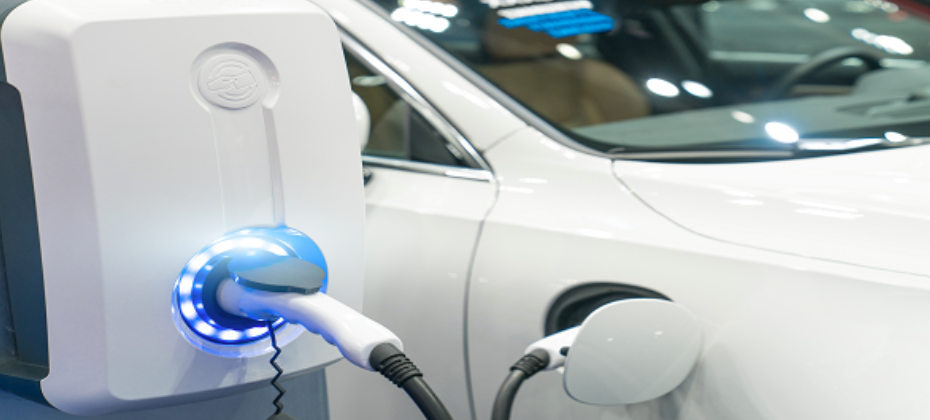
According to Experian’s State of the Automotive Finance Market Report: Q4 2023, EVs comprised 8.6% of total new retail transactions, an increase from 7.1% in Q4 2022.

Leasing has long been a popular choice among consumers who want to enjoy the latest vehicle models, but at a lower monthly payment. In fact, the average monthly lease payment was $127 less than a loan payment in Q2 2022. However, in recent quarters, we’ve seen leasing availability decline due to current market conditions. According to Experian’s State of the Automotive Finance Market Report: Q2 2022, leasing declined from 27.82% to 19.65% year-over-year, marking the lowest drop in quite some time. When analyzing previous data, leasing comprised 30.41% of all new vehicles in Q2 2018, decreasing to 30.04% in Q2 2019 and 26.58% in Q2 2020. There are likely a number of factors contributing to the decline of leasing over recent years, including the ongoing inventory shortages and OEMs not offering as many incentives, which may result in leasing opportunities becoming less common. Other scenarios can be consumers choosing to extend their lease, or purchase the vehicle once their lease has expired. In Q2 2022, the average monthly lease payment increased to $540, from $475 in Q2 2021. Though, the average monthly loan payment for a new vehicle surpassed $600 this quarter—coming in at $667, an $85 year-over-year increase. As automotive professionals continue to navigate through the inventory shortages and subsequent vehicle price increases, understanding the landscape and what options are available for consumers will be critical. One way to keep on top of the trends is analyzing the pricing options for the most popular leased models, which will enable more informed decisions in the months to come. Average monthly payment for top leased models As previously mentioned, there was an average payment difference of $127 between a lease and a loan in Q2 2022. However, that’s just an average, and these numbers can vary based on the vehicle type. For example, the average monthly lease payment for a Honda Civic was $363 in Q2 2022, as opposed to the average monthly loan payment of $476. In comparison, the average monthly lease payment for a Ford F-150 came in at $516 this quarter, compared to the average monthly loan payment of $832. While a pickup truck may typically have a higher average monthly lease payment than a sedan, consumers are continuing to choose larger vehicles, overall. In Q2 2022, there was only one sedan that made up the top leased vehicles—with the Ford F-150 having the highest leasing registration volume, comprising 2.3% this quarter. Rounding out the top five were Chevrolet Equinox (2.27%), Honda CR-V (2.16%), Honda Civic (2.09%), and Ram 1500 (1.81%). Despite the overall decline in leasing over the past year, it continues to be a financing option that consumers can consider amid vehicle prices increasing. Knowing what vehicles are most prevalent as well as their price points will allow professionals to create strategies that cater to the most current consumer financing preferences during their search for a vehicle that fits their needs. To learn more about leasing and other automotive finance trends, watch the entire State of the Automotive Finance Market: Q2 2022 presentation on demand.

According to Experian's State of the Automotive Finance Market Report: Q1 2022, SUVs and CUVs made up 60.38% of total vehicle financing, an increase from 58.95% in Q1 2021.
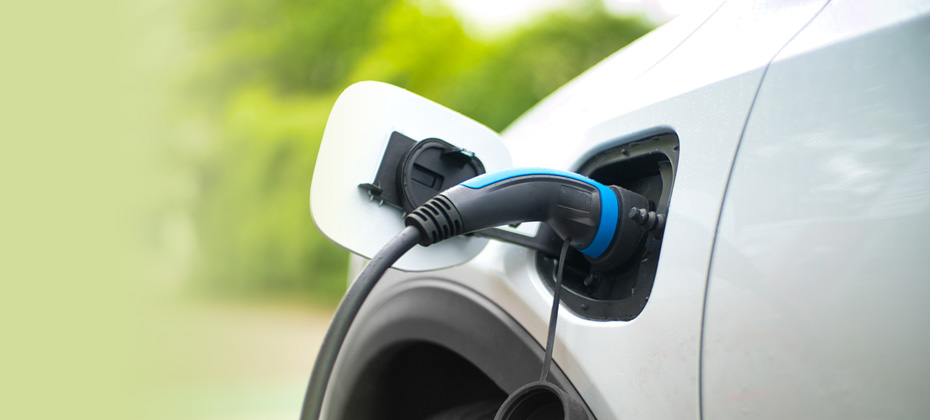
The State of the Automotive Finance Market: Q4 2021 report broke down alternative fuel financing trends—specifically how electric vehicle (EV) financing doubled year-over-year.

According to Experian’s State of Automotive Finance Market: Q3 2021 report, leasing comprised 24.03% of new vehicle financing in Q3 2021.
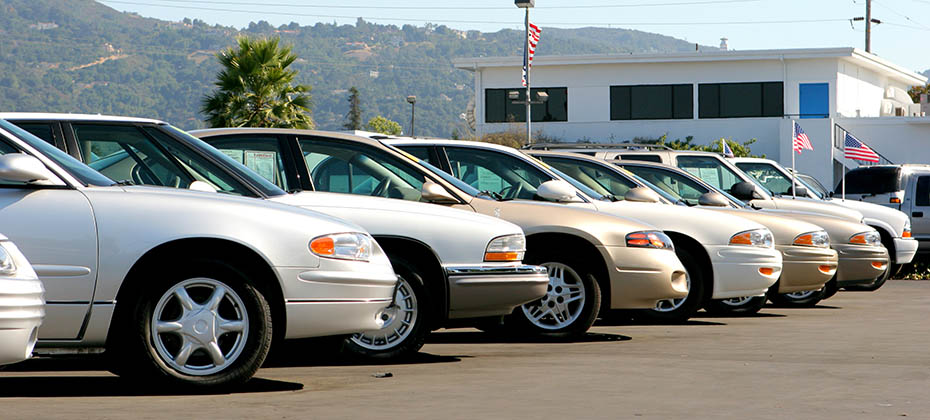
Trends can vary based on location. In the Q1 2021 State of the Automotive Finance Market report, we took a look at market share nationally and regionally.

Experian's Q4 2020 State of the Automotive Finance Market report gives insight into the current state of the leasing market.

According to Experian’s Q3 2020 State of the Automotive Finance Market report, 26.20% of all new vehicles are leased compared to 30.27% last year.